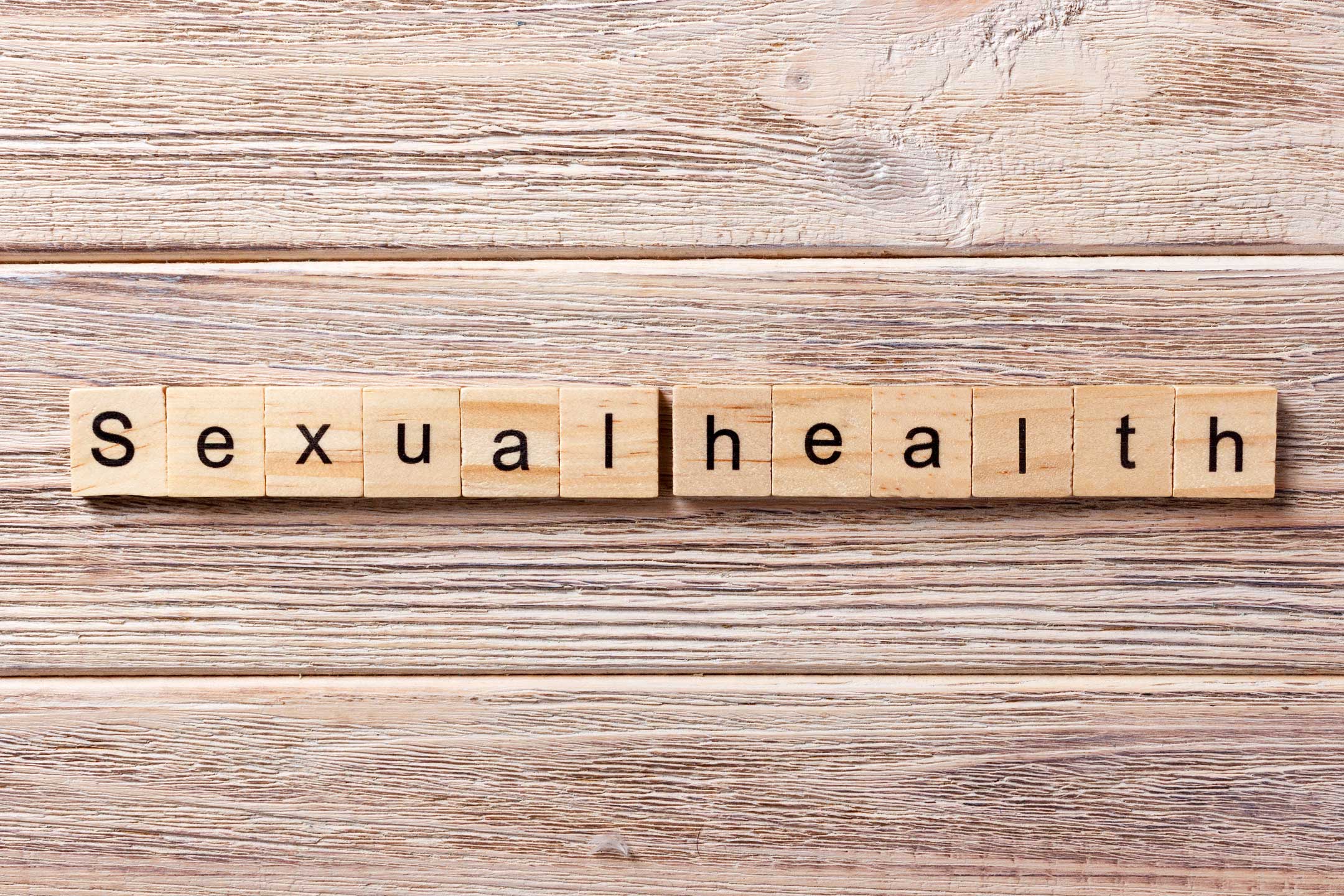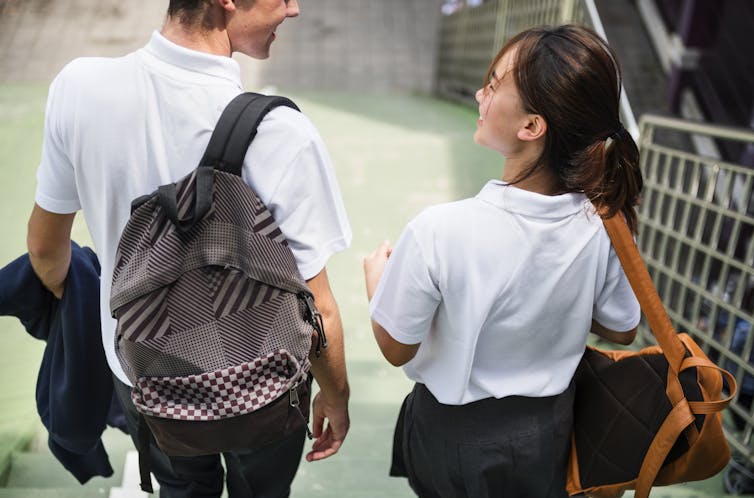
13 Apr Teaching kids the facts of life, without the moral panic
Australian parents want schools to teach more sex education topics and teach them from an earlier age, writes researcher Jacqueline Hendriks
Decades of research have shown when relationships and sexuality education are delivered well, it can improve the sexual, social, and emotional health of young people. It can also lead to improved academic outcomes.
But research also shows schools worry parents and families will revolt if they provide too much detail in their sex education programs.
So it is important schools know what Australian parents actually think and want when it comes to relationships and sexuality education.
Our recent study surveyed Australian parents about what schools should teach and when they should teach it.

The history of sex education in Australia
Sex education in Australian schools has a long and complex history. Propelled by the HIV and AIDS pandemic of the early 1980s, programs often focused on preventing sexually transmissible infections, leading to many of us suffering through awkward lessons, such as how to put condoms on bananas.
Lessons about our changing bodies, menstruation and pregnancy prevention were also common. For many, perhaps the only time we saw our school nurse was that one time they came into the classroom to put a tampon in a glass of water – much to the horror of anyone who might need to use one.
More recently, a wider variety of topics has been covered by schools to reflect the modern issues faced by young people. This includes a focus on consent. Age-appropriate consent education is mandatory as of 2023, from the first year of schooling to year 10.
However, the actual delivery of relationships and sexuality education in Australian schools is still highly varied. And students often tell us that the content they are given is not relevant. This is in stark contrast to the United Kingdom, where relationships and sex education became mandatory in 2020.

Nataliya Vaitkevich/Pexels, CC BY-NC
What should good quality sex education include?
According to international research, schools should teach a broad range of sexuality-related topics from the earliest years. Previous approaches that relied heavily on fear or risk should be avoided. Instead, there should be an emphasis on well-being.
To give children and young people the information they need to be safe and healthy, a good quality relationship and sexuality education should include the following:
- naming all body parts without shame
- learning about the social, emotional and physical changes that come with puberty
- developing a healthy body image (this includes learning that our genitals all look different – and that’s okay)
- skills for decision-making about around sex and relationships, how to communicate effectively with friends or partners
- how to safely navigate online spaces, including an understanding of the impact pornography can have on how we see sex
- gender stereotypes and how they are problematic for everyone
- skills to maintain healthy relationships and how to engage in sexual practices as safely as possible
- affirmation of LGBTIQA+ diversity and
- reliable places where you can seek support or get more information.
Advertisement
Our research
Our new research project set out to establish exactly what Australian parents think about school relationships and sexuality education via an online survey.
More than 2,400 Australian parents were surveyed in late 2021. They represented all states and territories, and their children were enrolled in both primary and secondary schools.
All school sectors – government, independent and Catholic – were represented.
What should students be taught?
Overall, 90% of parents in the survey either agreed or strongly agreed schools should deliver relationships and sexuality education.
Parents also reviewed a list of 40 sex education topics, from correctly naming body parts to sexting and masturbation. They were then asked if such a lesson was appropriate for the school classroom.

Savannah Dematteo/Pexels, CC BY-NC
Across all 40 topics, there was emphatic support for schools to address each of these issues. In most cases, the level of support was more than 95%. Some of the most supported topics were peer pressure, communication skills and changes associated with puberty.
Support was lowest for topics such as pleasure, masturbation, pornography, gender stereotypes, gender identity and sexual orientation. However, the level of support for these topics still ranged from 83% to 92%. This confirms other recent research, which found that Australian parents highly support schools teaching about the diversity of gender and sexuality.
When should students be taught?
Parents in our survey were also asked to indicate at what grade level each topic should first be introduced.
Most parents thought a small number of topics could easily begin in primary school, with the remaining topics being held over until secondary school. The primary school topics included bodily autonomy and personal boundaries, personal safety (or child abuse prevention) and correct names for body parts, including genitals and changes associated with puberty.
Interestingly, their preference was for more sensitive lessons, such as reasons to engage/not engage in sex, safer sex practices, sexting, contraception, and pornography, to start in years 7 and 8. This is an important finding, as we know many schools hold off on delivering a lot of their sexuality education until years 9 and 10, as guided by the Australian curriculum.
Whilst most parents rated the current quality of relationships and sexuality education at their child’s school to be somewhere between good and very good (58%), 21% felt it hadn’t been taught at all by their school, and 12% were unsure what their school actually delivered.
What happens now?
Our study demonstrates that most Australian parents surveyed want schools to deliver a truly comprehensive relationships and sexuality program. Yes, there is public support for consent to be covered – as it should be. But parents also want many issues beyond consent to be taught at school.
Despite a vocal minority who might criticise particular lessons, schools should feel confident most families have their back. In many instances, they actually want these topics to be introduced in earlier grade levels.

Ketut Subiyanto/Pexels, CC BY-NC
Schools may benefit from consulting with their parent bodies and developing a specific school policy about relationships and sexuality education. Any policy should be heavily grounded in evidence, but it will also benefit from the input of staff, students and parents.
Our curriculum writers should also feel confident to include terms like “sex”, “contraception”, “pornography”, “gender diversity”, and “sexual orientation” in their guidance to educators. For too long, there has been a reluctance to provide clear directions to schools about what topics to teach. This lack of clarity, along with inadequate teacher training, has had a big impact on our ability to implement relationships and sex education across the country in an effective and uniform manner.
Young people have a right to be educated about their bodies. And Australian parents want schools to play their part in doing this.
Talk Soon. Talk Often is a resource to help families have discussions about relationships and sex with their children. Yarning Quiet Ways is a similar resource for Aboriginal and Torres Strait Islander families.
The author wishes to acknowledge her co-researchers: Katrina Marson, Jennifer Walsh, Tasha Lawton, Hanna Saltis and Sharyn Burns.![]()
Jacqueline Hendriks, Research Fellow and Lecturer, Curtin University
This article is republished from The Conversation under a Creative Commons license. Read the original article.




